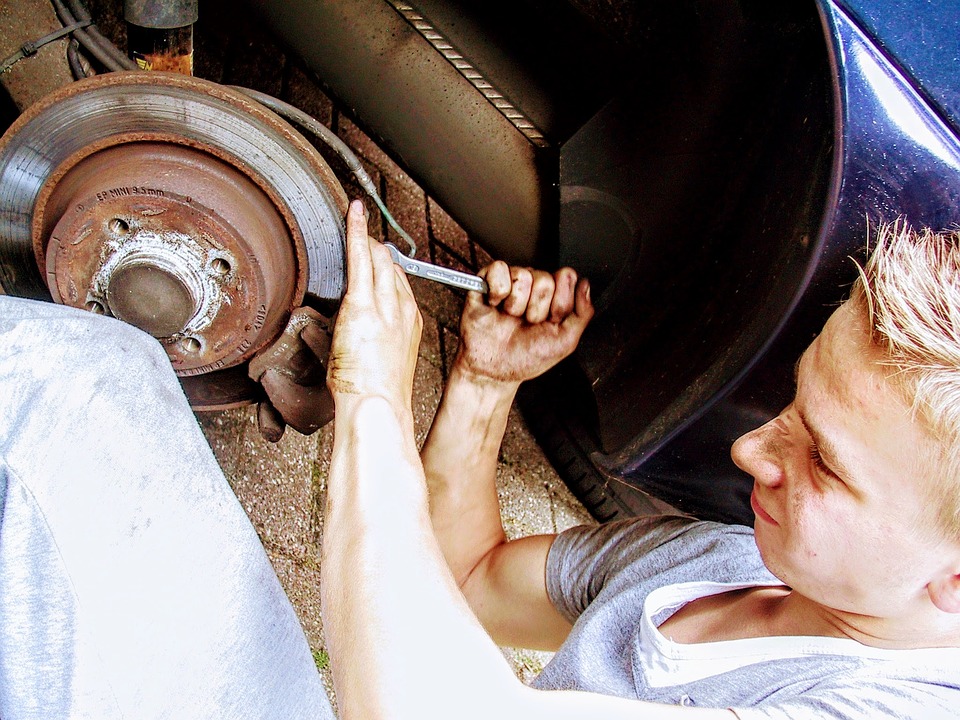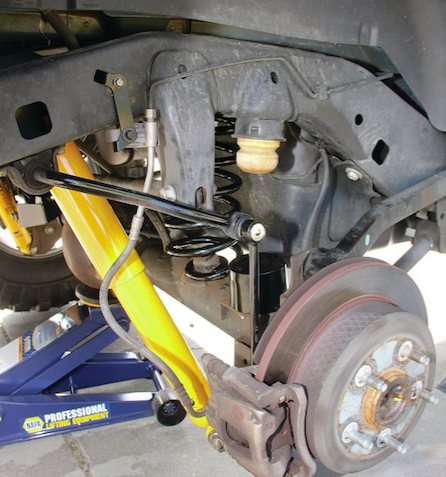
Installing a lift kit in your driveway means you will need at the very least a floor jack and four jack stands. Better to use a 6-ton jack stand just to be safe since we’ll be crawling around under the vehicle. As for floor jacks, get the best one you can afford. As much as we like the idea of aluminum floor jacks, we’ve had better luck with a big heavy 3 1⁄2-ton steel floor jack.
- Replace all the factory shocks and coils, so those items were removed first.
2. Use a die grinder with a carbide tip to open up the lower link mount hole into a slot. This is the only step requiring a specialty tool, a die grinder. You could do this with a file, but it would take a long time.
3. Drill out the factory axle bumps’ stop pad for the taller OME bumpstops. Using a step bit for this job helps keep the drill and bit package shorter and fits between the frame and axle easier. The instructions call for installing the front spacers before the coil springs, but we found it easier to put the spacers in the coils, then install the coils first, and afterwards add the bolts to the spacer.
4. Use a ratchet strap to pull the frame centered over the axle makes installing the track bar much easier.
5. The rear axle also needs the link mount holes elongated and the new tabs installed. This step is irritating unless you have a long shank bit in your die grinder since the outer part of the bracket is up against near the brake backing plate. The instructions do not call for any welding, but we feel that tack-welding these tabs to the axle brackets would add strength and reliability.
6. The front and rear suspensions also get longer sway-bar links. If you do not have a Rubicon (with the factory disconnecting sway bar) you can install the included sway-bar disconnect kit. There are also extension brackets for the brake lines, parking brake cables, and longer Nitrocharger shocks.

7. The kit is a 4-inch lift, but we added the included heavy load spacers for an additional 1⁄2 inch since this Wrangler has a hard top, rock sliders, and a winch bumper and is often used for camping where additional people and gear are hauled around. The suspension easily cleared the 35×12.50R17 Pit Bull Rockers on American Expedition Vehicles 17-inch Pintler wheels and could clear 37s with aftermarket high-clearance fenders. These tires are much more aggressive than the factory rubber, and the wheels have an inch less backspacing than stock to help clear all the suspension arms when turning.